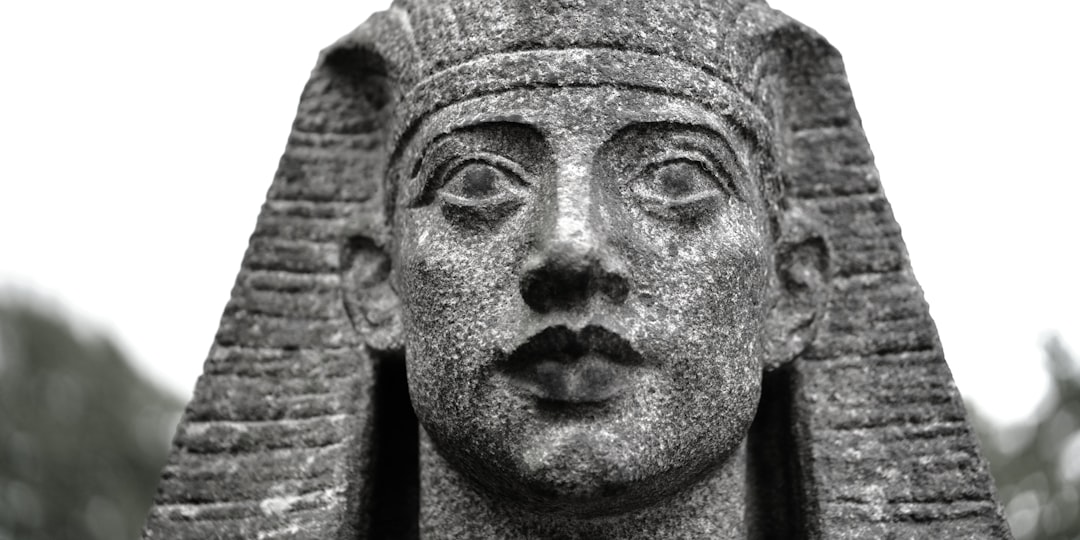Introduction
Amenhotep III, also known as Amenhotep the Magnificent, ruled Egypt during the 18th Dynasty in the New Kingdom period. He was the son of the Pharaoh Thutmose IV and his Queen, Mutemwiya. Amenhotep III is considered one of the greatest pharaohs in ancient Egypt’s history, with a reign that lasted for 38 years. His achievements in architecture, art, and diplomacy left an indelible mark on Egypt’s history. But was he truly the greatest pharaoh to rule Egypt? In this article, we will delve into the reign of Amenhotep III, one of ancient Egypt’s most fascinating and accomplished pharaohs. We will explore the life, reign, and legacy of Amenhotep III and try to answer this question. We will examine his legacy and explore the reasons why he is often regarded as one of Egypt’s greatest rulers.
The Life and Reign of Amenhotep III: An Overview
Amenhotep III was born in Thebes, Egypt, in 1388 BC. His father, Thutmose IV, was a powerful pharaoh who had expanded Egypt’s territory and built many temples throughout the country. Amenhotep III succeeded his father at the age of 12 and began his reign as a co-regent with his mother, Queen Mutemwiya. During his reign, Amenhotep III focused on expanding Egypt’s economy and strengthening its international relations.
He built many temples and monuments throughout the country, including the Temple of Luxor, the Temple of Karnak, and the Colossi of Memnon. He also established diplomatic relationships with many foreign nations, including the Mitanni Empire and the Hittite Kingdom. Amenhotep III was also known for his love of art and luxury. He commissioned many statues and reliefs depicting himself and his family, and he surrounded himself with the finest art and craftsmanship of the time.
Amenhotep III was also famous for his harem, which consisted of hundreds of wives and concubines. But his reign was not without its challenges. In his later years, he suffered from ill health and faced threats from foreign invaders. His successor, Amenhotep IV, would go on to change Egypt’s religion and political system, which would ultimately lead to the downfall of the 18th Dynasty.
Was Amenhotep III Egypt’s greatest pharaoh?
Amenhotep III’s reign lasted for nearly four decades, during which he implemented numerous building projects and established diplomatic relations with other powerful nations. He was known for his immense wealth, luxurious lifestyle, and love for the arts. His rule was marked by stability and prosperity, and he was widely regarded as a benevolent ruler.One of Amenhotep III’s most famous achievements was the construction of the Temple of Amun at Karnak, which he enlarged and embellished with numerous impressive structures.
Amenhotep III also commissioned the construction of the Colossi of Memnon, two massive stone statues of himself that stand at the entrance to his funerary temple. Despite his impressive accomplishments, Amenhotep III’s legacy is somewhat overshadowed by that of his son, Akhenaten, who is known for his revolutionary religious reforms. Some historians argue that Amenhotep III’s reign paved the way for these reforms by promoting the worship of the sun disk god, Aten.
So, was Amenhotep III Egypt’s greatest pharaoh? It’s difficult to say definitively, as each pharaoh contributed to the development and legacy of ancient Egypt in their own unique ways. However, Amenhotep III’s reign undoubtedly stands out as a period of great cultural, artistic, and economic flourishing, making him one of the most fascinating and significant pharaohs in ancient Egypt’s history.
Amenhotep III’s Legacy
Amenhotep III left behind an incredible legacy that would influence Egypt for centuries to come. His grand building projects, including the construction of the Colossi of Memnon, the Temple of Luxor, and the Temple of Karnak, continue to astound visitors to this day. His diplomacy with foreign nations, particularly with the Mitanni and the Hittites, helped maintain Egypt’s power and influence in the region. Moreover, Amenhotep III’s son, Amenhotep IV (later known as Akhenaten), would go on to revolutionize Egyptian religion and society by introducing the concept of monotheism and moving the capital city to a new location.
Although Akhenaten’s reforms were eventually reversed after his death, they nonetheless had a lasting impact on Egyptian history and culture. Amenhotep III was undoubtedly one of Egypt’s greatest pharaohs, whose reign was marked by immense wealth, grand building projects, diplomatic successes, and a flourishing artistic and cultural scene. His legacy continues to inspire awe and wonder to this day, as Egyptologists and history enthusiasts alike continue to uncover new discoveries about this remarkable ruler and his time. Despite the challenges he faced, Amenhotep III’s legacy endured long after his death.
Akhenaten’s architectural achievements, including the Temple of Luxor and the Colossi of Memnon, remain some of the most impressive structures in Egypt. His diplomatic efforts helped establish Egypt as a major power in the ancient world, and his love of art and luxury set a standard for future pharaohs. But was he truly Egypt’s greatest pharaoh? That is a matter of debate. While his achievements were certainly impressive, some historians argue that other pharaohs, such as Ramesses II and Thutmose III, had a greater impact on Egypt’s history.
Conclusion
Amenhotep III was undoubtedly one of ancient Egypt’s most remarkable pharaohs. His reign was marked by great achievements such as the construction of some of the most impressive monuments in Egypt, including the Colossi of Memnon and the Temple of Luxor. He was also known for his diplomatic skills, maintaining peaceful relationships with neighboring empires and even forging alliances through marriage. However, his reign was not without controversy, as he was criticized for his indulgent lifestyle and perceived neglect of religious duties. Despite these criticisms, Amenhotep III’s legacy as a great pharaoh lives on, and his reign is widely regarded as one of the most prosperous and culturally significant periods in Egyptian history.


